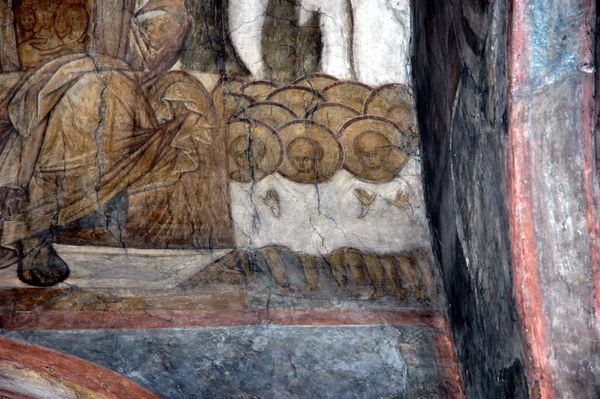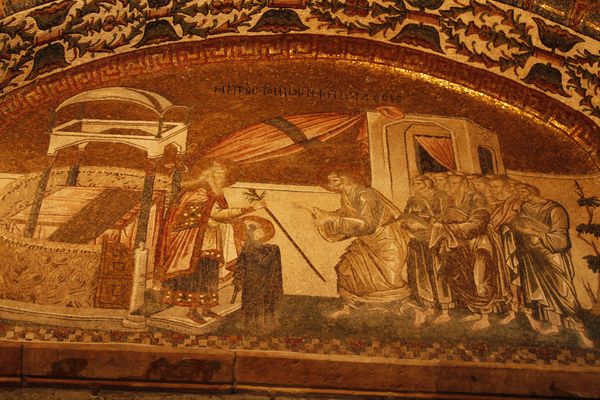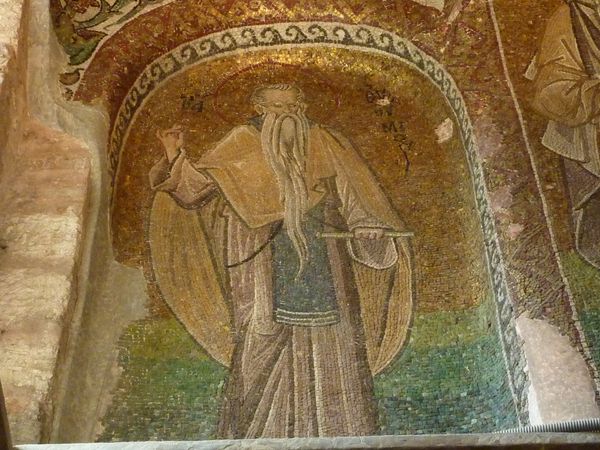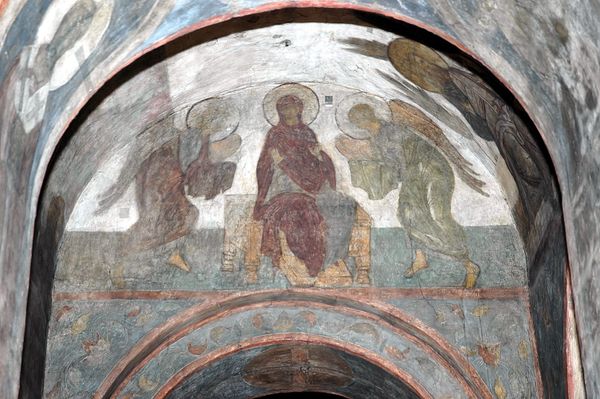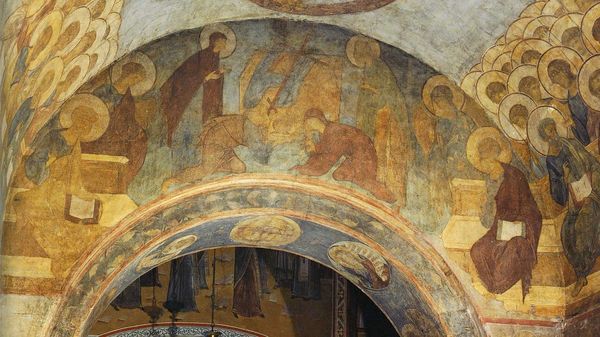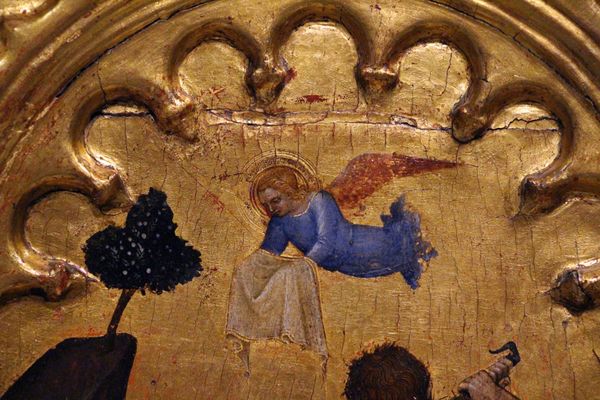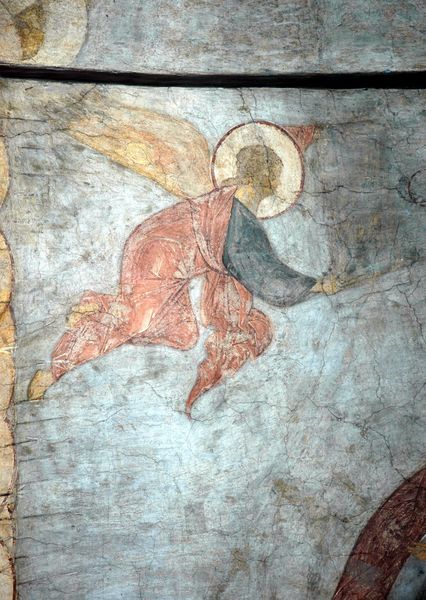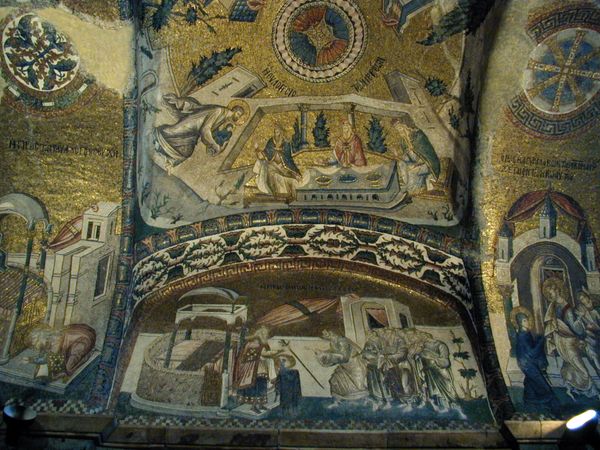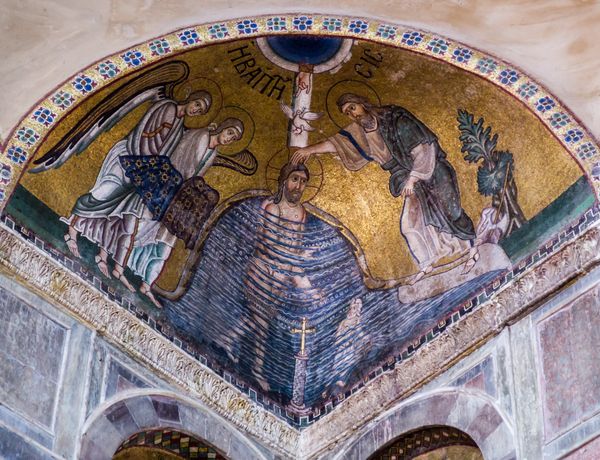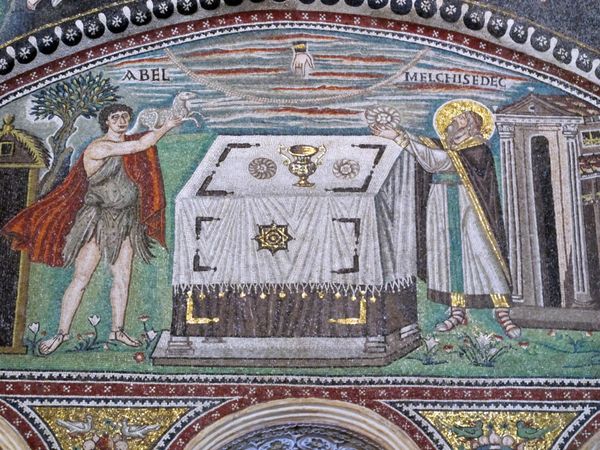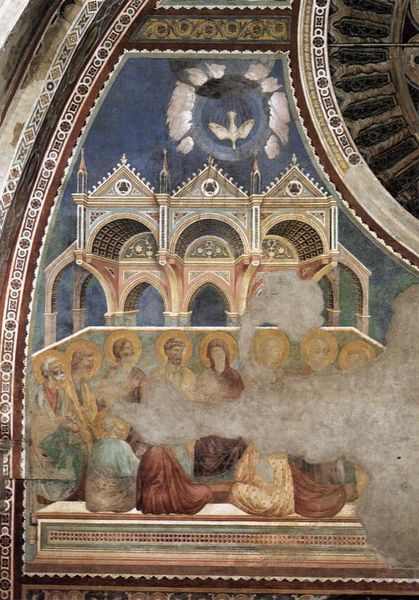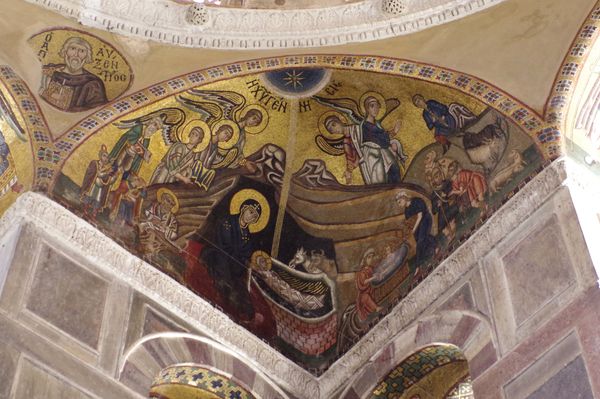
mosaic, architecture
#
mosaic
#
byzantine-art
#
medieval
#
narrative-art
#
sculpture
#
holy-places
#
figuration
#
architecture
Copyright: Public domain
Editor: Here we have the "Flight of Elisabeth Mosaic," a Byzantine artwork dating back to 1320, located in the Chora Church in Istanbul. It's made with incredibly detailed mosaic work. The figures seem to be caught in a moment of drama. I'm really intrigued by the depiction of movement within such a rigid medium. What kind of story does this scene tell? Curator: This mosaic, like much of Byzantine art, operates within a specific visual and theological framework. The image itself depicts a story, The Massacre of the Innocents. Given its location within the Chora Church, formerly a monastery, its function extends beyond mere illustration. Think of its role within the religious experience of the viewers. Editor: Religious experience? Curator: Yes, it serves as a point of connection for the worshipper to biblical events. The placement of the mosaic and others like it around the church played a crucial role. How might these visuals impact those engaging in prayer or contemplation within the church? Editor: I guess it brings the stories to life, making the historical and the divine feel present. It also makes me think about the power dynamics; who commissioned the artwork and who was meant to view it? Curator: Exactly. The patronage and the intended audience were both key. Knowing the patrons were wealthy and powerful gives insight into the socio-political environment influencing artistic expression. The use of mosaics in Byzantine art, often embellished with gold, signifies imperial power but also acts as a visual language reinforcing social hierarchies and religious dogma. Do you think the rigid structure emphasizes this formality? Editor: Absolutely, the formality contrasts with the chaos of the depicted narrative, adding another layer to its interpretation. Thinking about this practically as a narrative scene, where did Elisabeth and her child run? And where were they running from? Curator: From soldiers doing Herod's bidding in Bethlehem! Editor: Fascinating. So it becomes more than just aesthetic; it's interwoven with history, faith, and the politics of the time. I'll never look at a Byzantine mosaic the same way! Curator: And understanding that intersection is how art becomes a powerful lens to understanding the past.
Comments
No comments
Be the first to comment and join the conversation on the ultimate creative platform.
